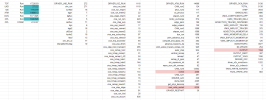Hi All,
I am trying to optimize CESM 1.2.2.1 with a resolution ne120_t12 and a component B1850C5.
Component B1850C5 contains a lot of sub-models like OCN, LND, ATM, ICE, SPL, GLC, ROF, WAV.
So, I want to allocate the computational resources to each sub-models in order to find the best performance.
Computational resources and time are limited to test under various conditions.
Could I get any documentation on how to check the approximate amount of computation for each model or how to best allocate computational resources?
I do not have enough experience with CESM and sub-models, So, to keep things as simple as possible, So, to make the problem as simple as possible, I want to adjust only ntasks and rootpe with nthrds=1.
Please let me know if you have any suggestions.
Best Regards,
Kihang
I am trying to optimize CESM 1.2.2.1 with a resolution ne120_t12 and a component B1850C5.
Component B1850C5 contains a lot of sub-models like OCN, LND, ATM, ICE, SPL, GLC, ROF, WAV.
So, I want to allocate the computational resources to each sub-models in order to find the best performance.
Computational resources and time are limited to test under various conditions.
Could I get any documentation on how to check the approximate amount of computation for each model or how to best allocate computational resources?
I do not have enough experience with CESM and sub-models, So, to keep things as simple as possible, So, to make the problem as simple as possible, I want to adjust only ntasks and rootpe with nthrds=1.
Please let me know if you have any suggestions.
Best Regards,
Kihang


